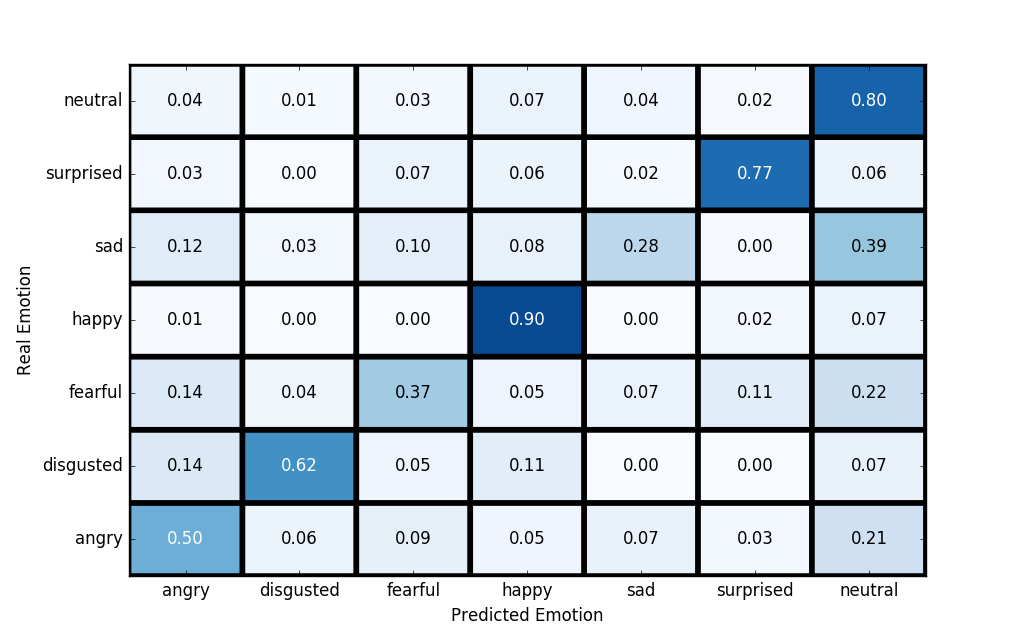https://github.com/isseu/emotion-recognition-neural-networks
Emotion recognition using DNN with tensorflow
https://github.com/isseu/emotion-recognition-neural-networks
convolutional-neural-networks deep-neural-networks emotion-recognition machine-learning tensorflow
Last synced: 7 months ago
JSON representation
Emotion recognition using DNN with tensorflow
- Host: GitHub
- URL: https://github.com/isseu/emotion-recognition-neural-networks
- Owner: isseu
- License: mit
- Created: 2016-03-03T10:29:32.000Z (over 9 years ago)
- Default Branch: master
- Last Pushed: 2022-11-22T02:28:59.000Z (almost 3 years ago)
- Last Synced: 2024-10-30T14:42:40.623Z (about 1 year ago)
- Topics: convolutional-neural-networks, deep-neural-networks, emotion-recognition, machine-learning, tensorflow
- Language: Python
- Homepage:
- Size: 14.4 MB
- Stars: 834
- Watchers: 46
- Forks: 309
- Open Issues: 42
-
Metadata Files:
- Readme: README.md
- License: LICENSE
Awesome Lists containing this project
- awesome-affective-computing - emotion-recognition-neural-networks
- awesome-affective-computing - emotion-recognition-neural-networks
README
# Emotion recognition with CNN
# DO NOT USE: Currently I think the code is not even running and I really don't have time to fix it
This repository is the out project about mood recognition using convolutional neural network for the course Seminar Neural Networks at TU Delft.

67% Accuracy

## Dataset
We use the [FER-2013 Faces Database](http://www.socsci.ru.nl:8180/RaFD2/RaFD?p=main), a set of 28,709 pictures of people displaying 7 emotional expressions (angry, disgusted, fearful, happy, sad, surprised and neutral). **The dataset quality and image diversity is not very good and you will probably get a model with bad accuracy in other applications!**
You have to request for access to the dataset or you can get it on [Kaggle](https://www.kaggle.com/c/challenges-in-representation-learning-facial-expression-recognition-challenge/data). Download `fer2013.tar.gz` and decompress `fer2013.csv` in the `./data` folder.
Install all the dependencies using `virtualenv`.
```bash
virtualenv -p python3 ./
source ./bin/activate
pip install -r requirements.txt
```
The data is in CSV and we need to transform it using the script `csv_to_numpy.py` that generates the image and label data in the `data` folder.
```bash
$ python3 csv_to_numpy.py
```
By default this is using AlexNet architectures, but in the paper we propose different ones.
## Usage
```bash
# To train a model
$ python3 emotion_recognition.py train
# To use it live
$ python3 emotion_recognition.py poc
```
## Paper
[Link](https://github.com/isseu/emotion-recognition-neural-networks/blob/master/paper/Report_NN.pdf)